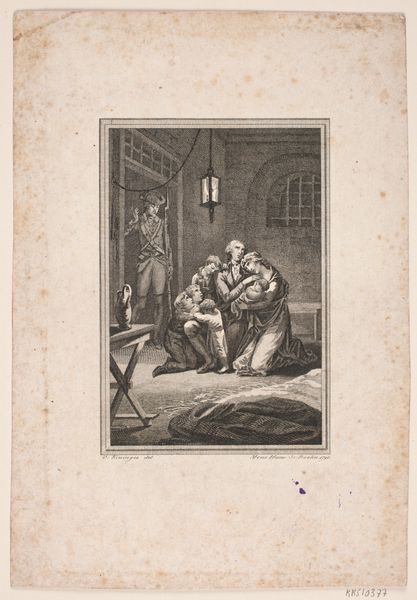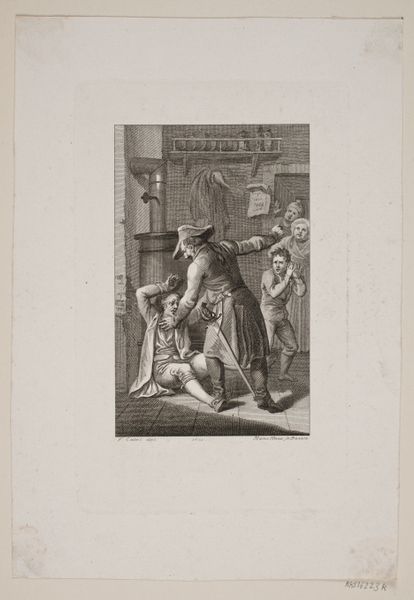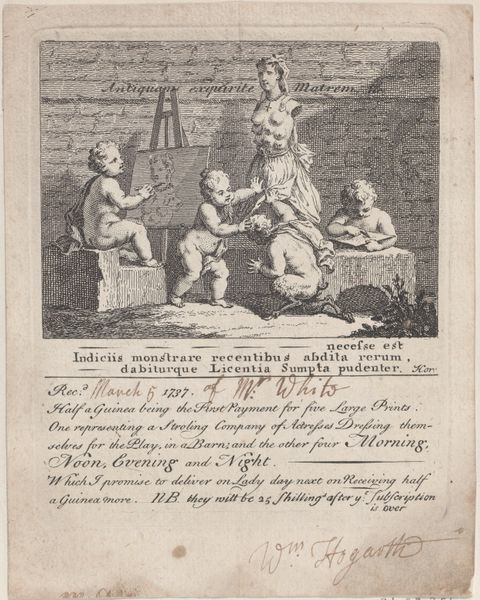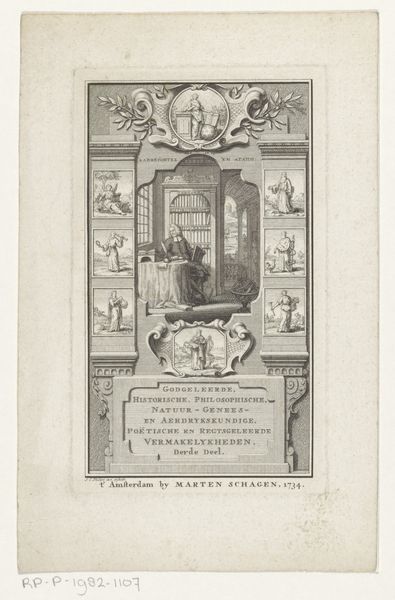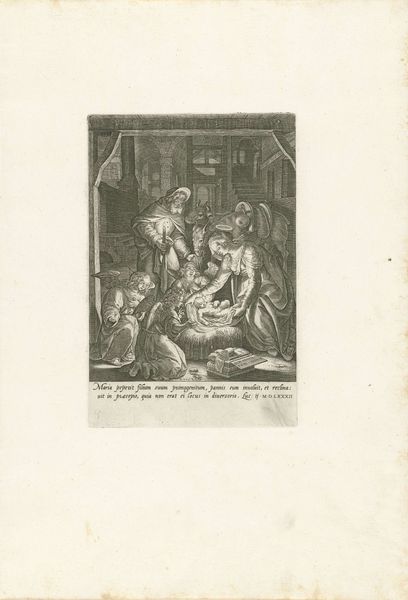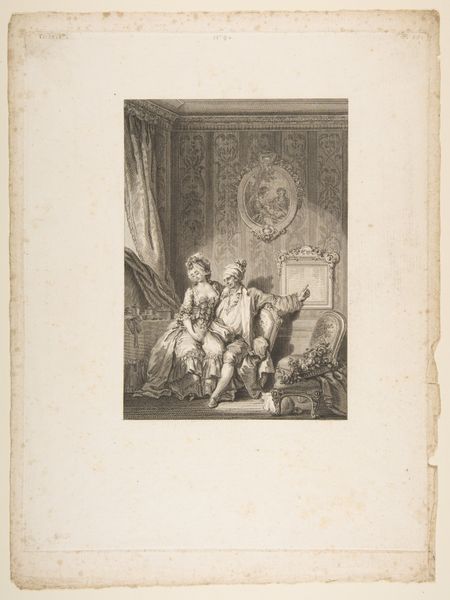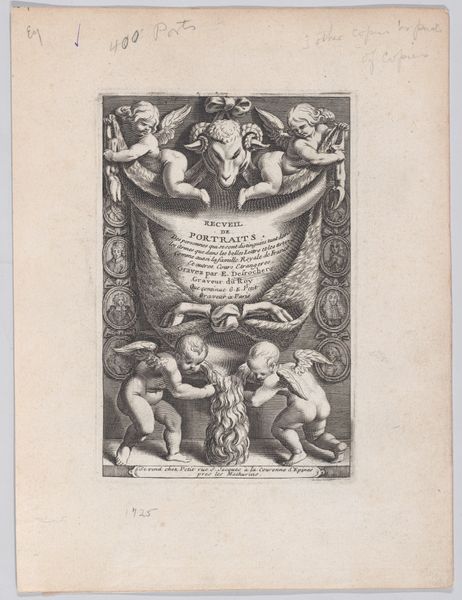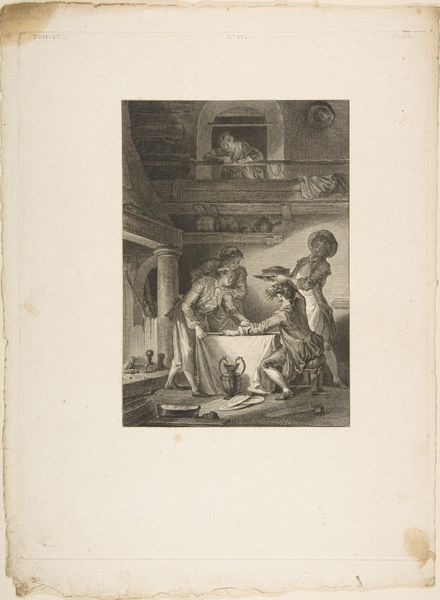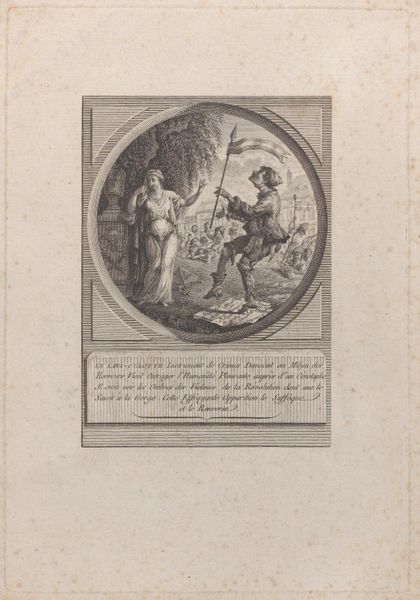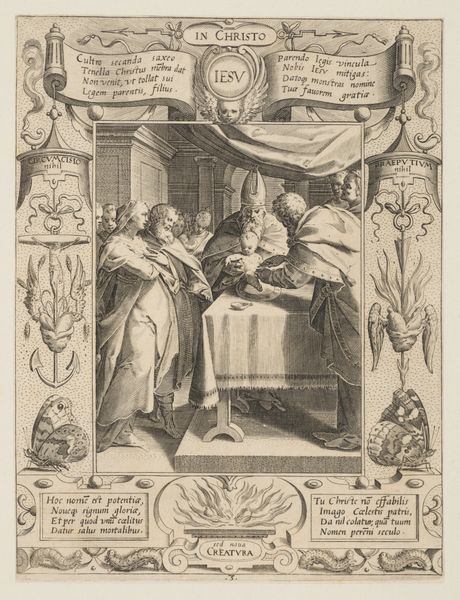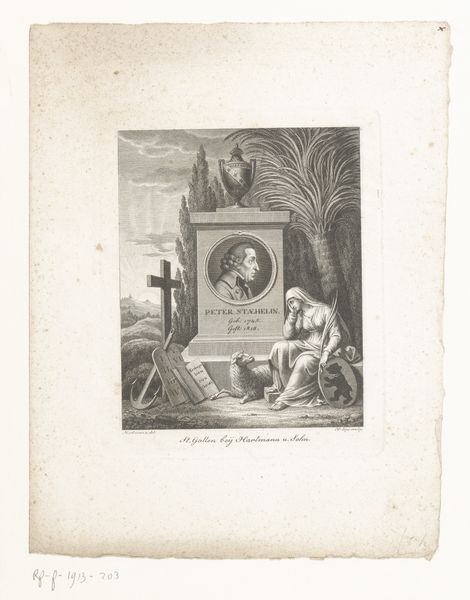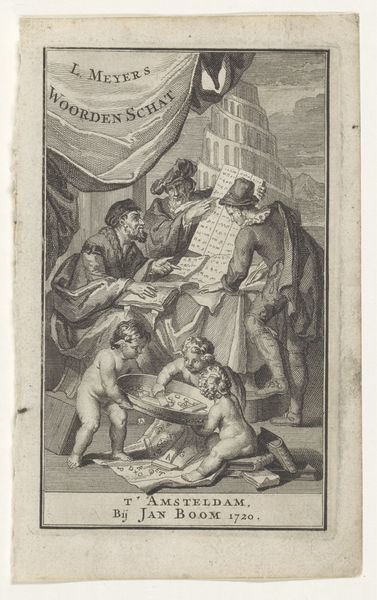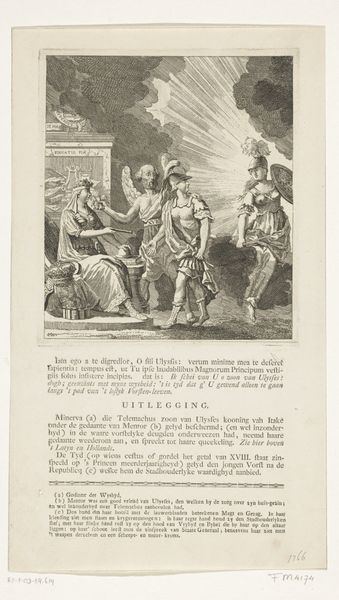
drawing, print, ink, engraving
#
pen and ink
#
drawing
#
narrative-art
# print
#
pencil sketch
#
figuration
#
ink
#
romanticism
#
history-painting
#
engraving
Dimensions: plate: 8 1/2 x 6 9/16 in. (21.6 x 16.7 cm) sheet: 16 1/4 x 10 7/8 in. (41.3 x 27.6 cm)
Copyright: Public Domain
This etching, "The Wrath of Elihu," was made by William Blake around 1825. Here, the youthful Elihu gestures emphatically, a stark contrast to the aged figures before him. The stars above symbolize divine presence, casting judgment upon the scene. Consider the raised hand, a motif that echoes through art history, from classical orators to Renaissance depictions of John the Baptist. It is a gesture of authority, of divine decree. Yet, in Blake's hands, it transforms. Elihu, though young, embodies a prophetic fury, challenging the wisdom of age. This isn't merely a depiction of a biblical scene; it's a symbolic commentary on the cyclical nature of knowledge and the eternal tension between youth and age. The same hand appears in Roman sculptures, demanding attention, but here, it’s charged with a fervent, almost desperate energy. The image taps into our collective unconscious, recalling ancient power dynamics and the timeless struggle for enlightenment. It's a potent reminder that symbols are never static; they evolve, resurface, and take on new life across the ages.
Comments
No comments
Be the first to comment and join the conversation on the ultimate creative platform.
